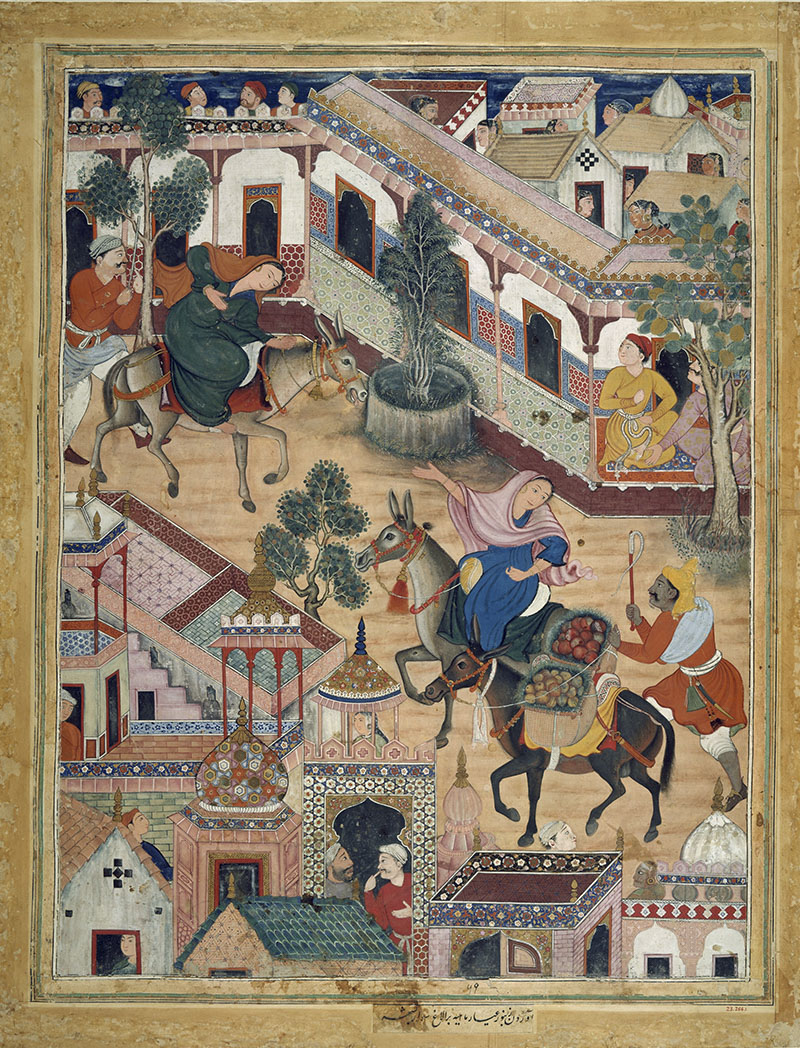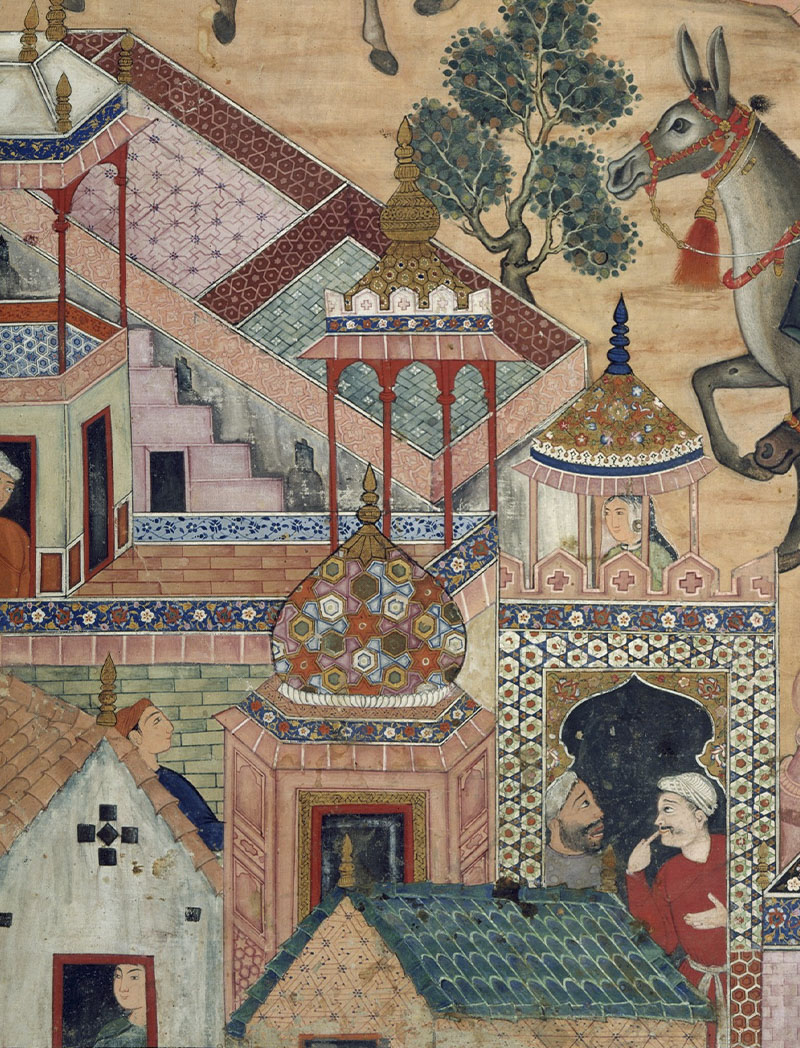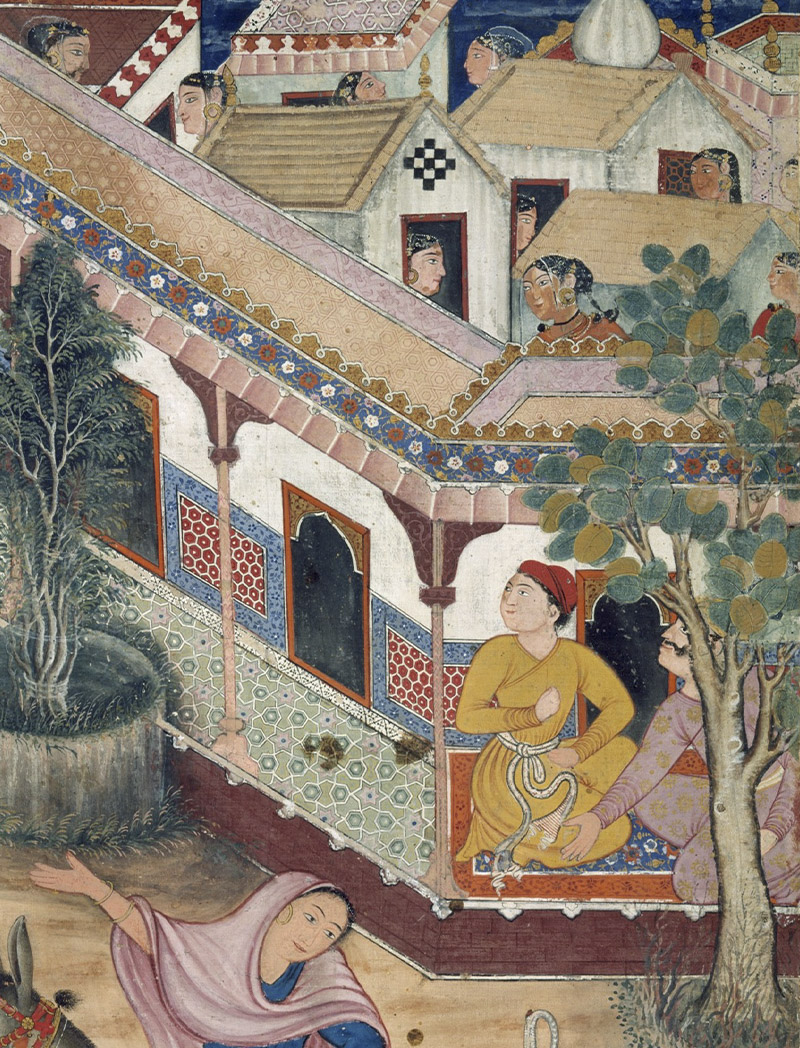PERSPECTIVES
Spies, the City of Tawariq and the Hamzanama
A lavish folio from the ambitious sixteenth-century Hamzanama, the earliest major manuscript produced at Akbar’s imperial workshop, has over two feet tall illustrations. Hamzanama documents the escapades of Amir Hamza, prophet Muhammad’s uncle, who travelled worldwide on a mission to spread Islam, battling enemies and infidels along the way. Until the fifteenth century, stories from Hamzanama were recited by bards across the Islamic sphere, who often layered them with plot twists inspired by regional folklore. Unsurprisingly, by the time these were visualised in Akbar’s workshop in South Asia, they were laced with tangential narratives and combined painterly conventions from various cultures.
Attributed to Keshav Das and Mah Muhammed, “The Spy Zambur Brings Mahiya to the City of Tawariq” depicts two spies, Mahiya and Zambur, who enter the city of Tawariq riding donkeys laden with fruits. They are in search of Hamza’s son, Prince Ibrahim’s kidnapped lover, Khwarmah. Traversing through a dusty lane, they fortuitously encounter another couple, a medicine woman Ustad Khatun and her husband. Mahiya turns her gaze to Zambur, gesturing towards Khatun, who according to the accompanying text, would provide them with a safe house and cover.
The central figures and their immediate surroundings are rendered in naturalistic detail. They stand out from the rest of the painting that is composed diagonally, making the buildings — occupied by various townspeople — assume diminutive dimensions. Especially to the left, we see how rooftops are angled much too steeply, and a staircase ends up leading to nowhere. Even as it teems with architectural complexity and activity, the painting’s layout highlights the central action in the narrative, emphasising the gestures of the two women who occupy the main stage within the story.
In addition to serving as a potent narrative device, the painting contains renderings of distinctly Iranian tilework, figures that — according to scholars such as Mika Natif — recall European representations of Mary and Joseph travelling to Bethlehem, as well as Indic influences by local artists employed at the workshop. This syncretic approach forms the basis of what would later evolve into a uniquely Mughal style of miniature painting.







